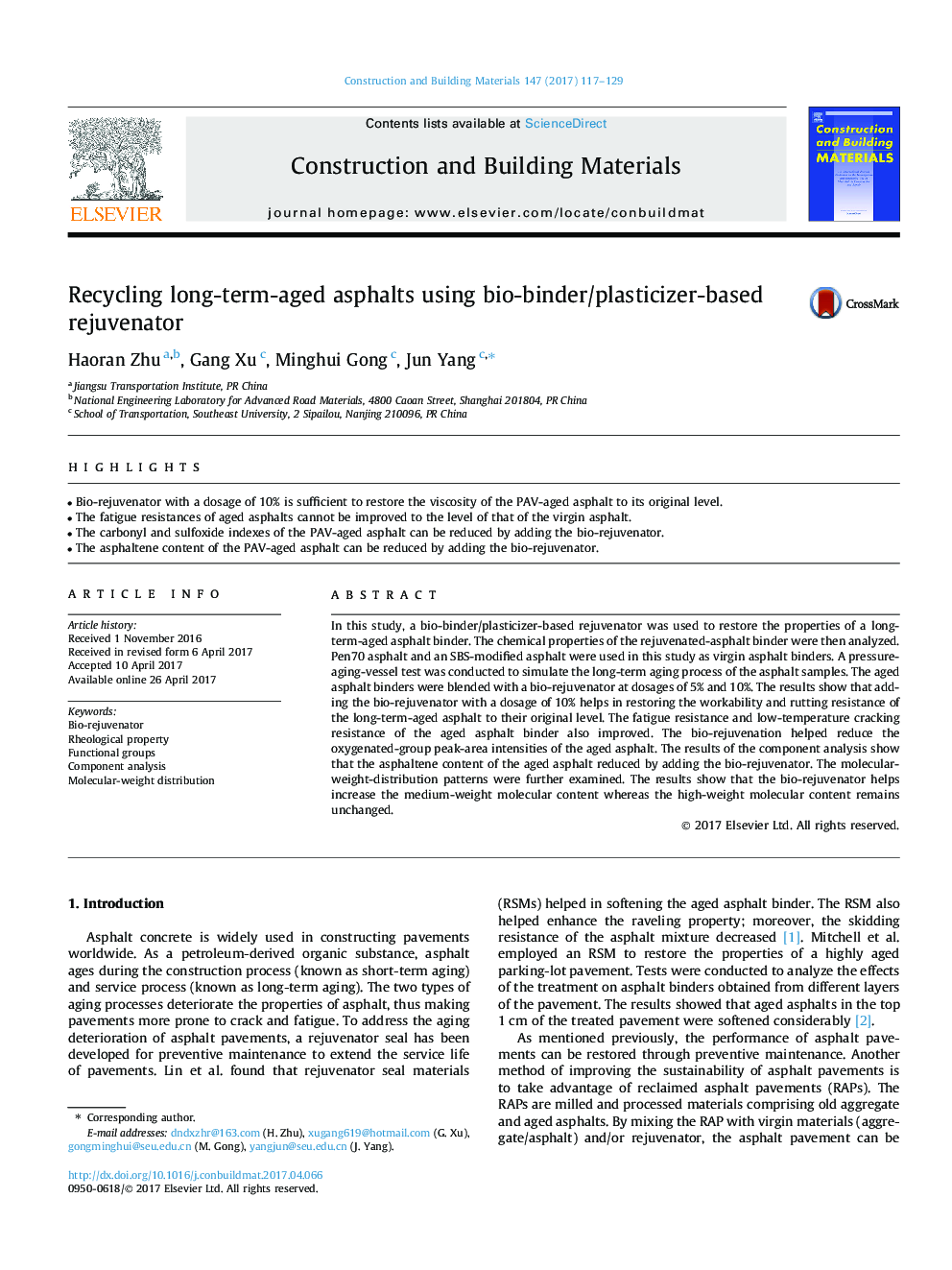| Article ID | Journal | Published Year | Pages | File Type |
|---|---|---|---|---|
| 6480473 | Construction and Building Materials | 2017 | 13 Pages |
â¢Bio-rejuvenator with a dosage of 10% is sufficient to restore the viscosity of the PAV-aged asphalt to its original level.â¢The fatigue resistances of aged asphalts cannot be improved to the level of that of the virgin asphalt.â¢The carbonyl and sulfoxide indexes of the PAV-aged asphalt can be reduced by adding the bio-rejuvenator.â¢The asphaltene content of the PAV-aged asphalt can be reduced by adding the bio-rejuvenator.
In this study, a bio-binder/plasticizer-based rejuvenator was used to restore the properties of a long-term-aged asphalt binder. The chemical properties of the rejuvenated-asphalt binder were then analyzed. Pen70 asphalt and an SBS-modified asphalt were used in this study as virgin asphalt binders. A pressure-aging-vessel test was conducted to simulate the long-term aging process of the asphalt samples. The aged asphalt binders were blended with a bio-rejuvenator at dosages of 5% and 10%. The results show that adding the bio-rejuvenator with a dosage of 10% helps in restoring the workability and rutting resistance of the long-term-aged asphalt to their original level. The fatigue resistance and low-temperature cracking resistance of the aged asphalt binder also improved. The bio-rejuvenation helped reduce the oxygenated-group peak-area intensities of the aged asphalt. The results of the component analysis show that the asphaltene content of the aged asphalt reduced by adding the bio-rejuvenator. The molecular-weight-distribution patterns were further examined. The results show that the bio-rejuvenator helps increase the medium-weight molecular content whereas the high-weight molecular content remains unchanged.
